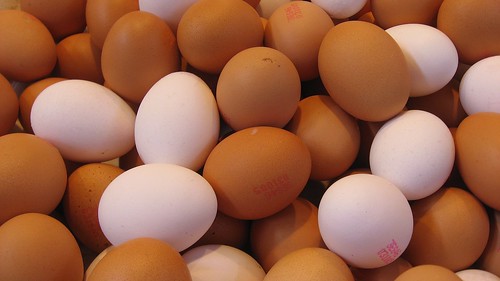To answer this question, let’s first turn to the famous Abraham to find out his thoughts on the matter. Now, I’m not referring to Abraham Lincoln but rather to another famous Abraham – Abraham Maslow.
I need to pre-warn you that this blog is rather long. I got a bit carried away with describing Maslow’s idea. So if you only want to read a few paragraphs, I would say jump to bullet point 5 and read a couple or so of paragraphs there, then jump to the last few paragraphs of the blog (after the grey picture) and read those paragraphs. Hopefully, just reading those bits will make you jump back to here and read the whole blog!
Who’s Maslow?
Well, Maslow was a psychologist who’s famous for a concept that is known worldwide as Maslow’s hierarchy of needs. He published this theory in the 1940’s in a paper called “A Theory of Human Motivation”. This outlined the needs of human beings in order of importance. It’s commonly depicted with the following pyramid:


Picture by BetterBizIdeas is licensed under a Creative Commons Attribution 4.0 International License.
There are essentially 5 levels to this pyramid. Although others later added a few more levels, these 5 levels are the heart and soul of Maslow’s concept.
I’m just going to start looking at each of these individual levels in a bit of detail before summing up my interpretation of this hierarchy. So, let’s begin by looking at the bottom of this pyramid and work our way up.
1. Physiological needs: Maslow believed that our greatest human needs start here. Once you’ve achieved those physiological needs, you’re then motivated to achieve the things on the next level…and so on and so on with each level.
Essentially, Maslow felt that you couldn’t be motivated to reach the next level until you had achieved the goals of the previous one.
So if you look at the things in the physiological needs, if you don’t have those, then you’re basically going to die. Time of death will vary between a few seconds (no air) to a few days (no water) to several days (no food).
If you look at one other particular need in this level, some of you may argue the essential nature of sex and some the opposite. What Maslow is referring to here is that sexual reproduction is vital to continue the human species, rather than it being a life or death thing for an individual.
2. Safety needs: Moving onto the next level of safety, we’re looking at a variety of things, not just literally living in safety. Of course, safety includes not living in a war-zone, having a roof over your head, not living in a place where there’s domestic violence etc. Any one of these situations can ultimately lead to death – being gunned down / freezing to death / being horrifically beaten.
However, safety also includes things like a child growing up in a stable home environment. Children don’t feel safe when two parents are constantly warring with each other and the threat of divorce is always looming in the air. The same is true for children moved from foster home to foster home – how can they possibly feel safe?
Included in the level of safety is having your health. If you’re suffering from a disease that affects your everyday living, such as severe coronary heart disease, then even taking a few steps causes you chest pain or shortness of breath. If you’re living like this it’s extremely difficult to think about much else. Obviously, there’s a spectrum to the severity of an illness but I’m just exaggerating here to get my point across.
Another important aspect at this level of safety is our need of having a job or some source of income. This is undoubtedly important. Without money, you’re not going to get very far.
3. Love and belonging needs: So half-way up the hierarchy we cross the level of love and belonging. This level not only includes your need to both give and receive love and affection with family, friends and work colleagues but also extends to feeling part of a group or community. It could mean you being a member of a football club or a golf club, attending your local art class, playing in a band, singing in a choir, being part of the Twitter community, engaging with your blogging community etc…basically connecting with others.
Now unlike the previous two levels of physiological and safety needs, if you don’t have your belonging and love needs met you’re not at risk of having a physical death as such. However, without your love and belonging needs met, it’s a pretty miserable existence, pretty lonely really.
Some people in the Western world struggle to move on up from this level but it’s really at the next level that many of us tend to reach a plateau.
4. Esteem needs: This level has two components. The first includes your need for others to recognise and respect your skills and talents. So if we’re talking about jobs, it’s about others acknowledging that you’re good at your job. It’s neither here or there what job you do. You could be a cleaner, a therapist, a housewife, a banker – it really doesn’t matter. It’s about having others recognise that you’re a trustworthy cleaner, a really empathetic therapist, a fantastically organised housewife, a really lucrative banker – I know that last bit might sound like an oxymoron (aren’t all bankers lucrative?)…but you get the idea.
The second part to the esteem level is about you, about you needing self-esteem – a sense of self-worth, achievement, mastery, status, really about you having pride in yourself. Some of you may have read that last sentence with a bit of a heavy heart, as you may have struggled with your self-esteem for literally years and are still struggling. You’re not alone – you’re really not.
This penultimate level of esteem (both others and yours) is the stumbling block for most people. Actually, it’s more like a 10 foot hurdle than a stumbling block.
If we’re truly honest, we do want some recognition from others. It doesn’t have to be massive crowds of people exclaiming “Wow, you’re so amazing at this or that!” but just simple, quiet, positive acknowledgement from others to let us know that they think, or even know, that we’re pretty good at something can suffice.
However, the matter of self-esteem is a totally different ball game. Self-esteem starts from your baby age…and goodness knows how many knocks and bumps people have had on the way up to the grand old age of now. No wonder so many people never reach the final stage of the hierarchy, what I sometimes like to refer to as “enlightenment”.
So many of us are stuck at the esteem level. So many of us suffer psychological problems in trying to grapple with aspects of this level; psychological problems ranging from anxiety, stress, neuroticism and depression.
Now just like the level of love and belonging needs, you’re not going to have a physical death per se if you don’t achieve your esteem needs. However, I do want to really emphasise that living with psychological problems isn’t nice. It can be pretty tormenting and tortuous. Being continuously plagued by your own stream of negative thoughts isn’t necessarily a life or death situation, depending on the severity of those thoughts…but it would be great if brain space could be used for thoughts of a more pleasant and constructive nature. Anyway, things can get so bad for some people that they eventually contemplate suicide. Unfortunately, some people manage to actually go through with the act and complete it. Very sad.
Now, let’s move on to the final stage of Maslow’s hierarchy.
5. Self-actualisation needs: What on earth does this mean?
Well, Maslow defined self-actualisation as “the desire for self-fulfillment” and “becoming everything one is capable of becoming”. This basically means reaching your maximum potential. This is what Maslow strongly believed was the ultimate goal of all human beings – for us to reach our full potential in our own unique way.
Now, how many people do you think are self-actualisers?
Not many. Not many at all. Only 1-2% of all of us reach this “peak” of self-actualisation. Like I said, so many people in the Western world get stuck at the level of esteem.
Now, reaching self-actualisation can be all sorts of goals, such as wanting to be very athletically fit, being a good mother/wife/dad/husband etc, being great at art/music/dance etc. This shouldn’t be confused with actually being the most athletically fit, the best mother/wife/dad/husband or being the most talented artist/musician/dancer. It’s about you striving to be the best in whatever you want to be great at, given the set of attributes unique to you.
To reiterate, self-actualisers make the most of what they’ve got – whether they’ve got a lot or very little.
Is there a better way of thinking about Maslow’s hierarchy?
Well, I think there is.
Maslow believed that when our human needs aren’t met, we basically feel stressed and can’t be motivated to progress up the levels until the goals in said level are achieved.
Now, there’s quite a bit of debate as to how Maslow originally conceived his concept. Putting that aside, it’s also been argued that this model is quite rigid, which I agree with.
For example, even though a person could be suffering from domestic violence (safety needs) they could still be motivated to belong to a group (love and belonging needs) and aim to be the best parent to their child (self-actualisation).
I personally believe that people can be motivated to achieve bits of each level at the same time. I prefer the reconstituted version of Maslow’s concept, as shown below. The text is blurred in the picture but you get the gist.
Rather than all these “levels” of needs existing in some sort of linear fashion, they actually co-exist.


Picture by jvleis is licensed under a Creative Commons Attribution 4.0 International License.
Of course, you don’t need to have or even need to aim for self-actualisation to survive on this planet. However, to have a meaningful and purposeful life, mastery of self-actualisation, as well as of the other needs, is key. For example, someone could be born into extreme wealth but still lead an unhappy life if they’re not feeling fulfilled.
To have drive really gives us a sense of direction in life, especially when things are tough. It gives us a meaning to our existence. After all, our existence is just that….we exist for really only a fraction of time (when you consider the whole universe), then we’re gone forever. So it’s really important to make our time on this planet really count.
If you think about how you can achieve all those needs (your physiological, safety, love and belonging, esteem and self-actualisation needs), that’s going to focus your mind on being motivated to lead a great, colourful and exciting life.
If you take that a step further and not just think about your needs – but actually get pen to paper and map out those needs – that really will be a great motivational tool, all personalised for you.
So go now and start being the creator of that amazingly wonderful map – that map of your life. It might take a bit of time to draw it up but it’s worth it. After all, it’s going to be a great journey – the journey of your life! Bon voyage!
 Image by Robin Miller (“Hugs”) is licensed under a Creative Commons Attribution 4.0 International Licence
Image by Robin Miller (“Hugs”) is licensed under a Creative Commons Attribution 4.0 International Licence









